Negative energy
Negative oil prices? According to some, it could happen. Per CNBC:

What's interesting about this is it's not the first time the concept of zero or negative oil prices has been discussed in mainstream financial media. This also made the rounds in early 2016.
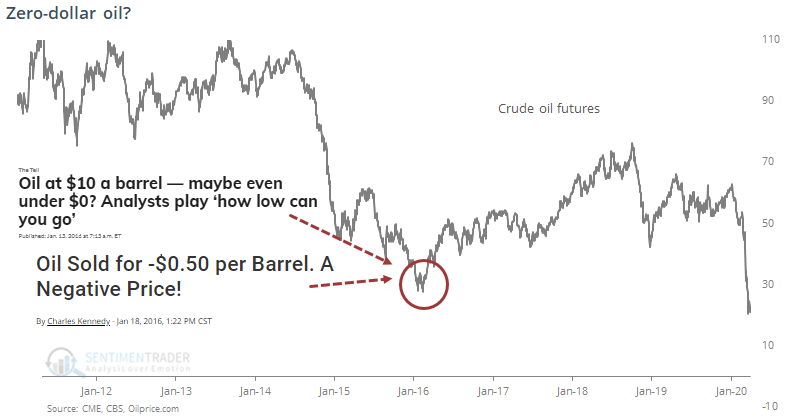
It seems like the drumbeat of negative views has commanded attention. The number of shares outstanding in oil ETPs has gone parabolic.
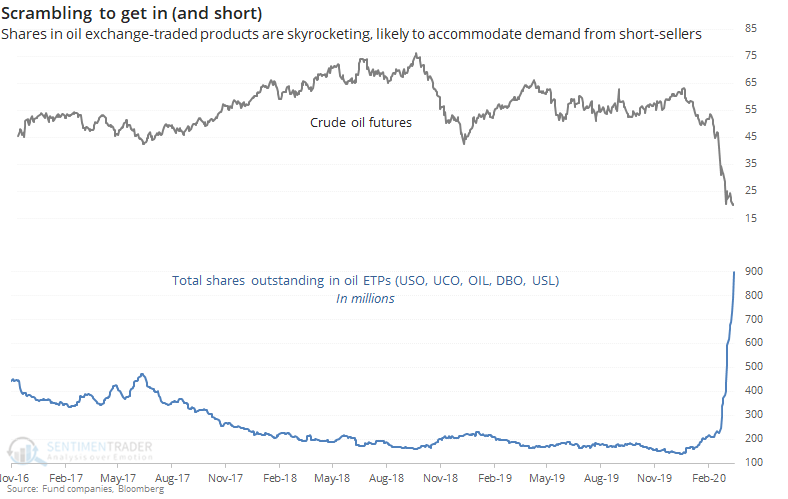
In funds like these, we often see share counts rise during declines, and it's not always due to knife-catching buy-the-dippers. It can also be due to the companies creating more units in order to accommodate demand from those looking to sell short.
Instead of selling an ETF or ETN short, a trader could buy an inverse fund that profits when oil falls. These aren't as popular as inverse funds for stocks, and while they've picked up lately, it's nowhere near like what happened in early 2016. Bloomberg creates a custom index that approximates the number of barrels of oil sold short by the inverse funds, and currently it's far from the 2016 extreme.
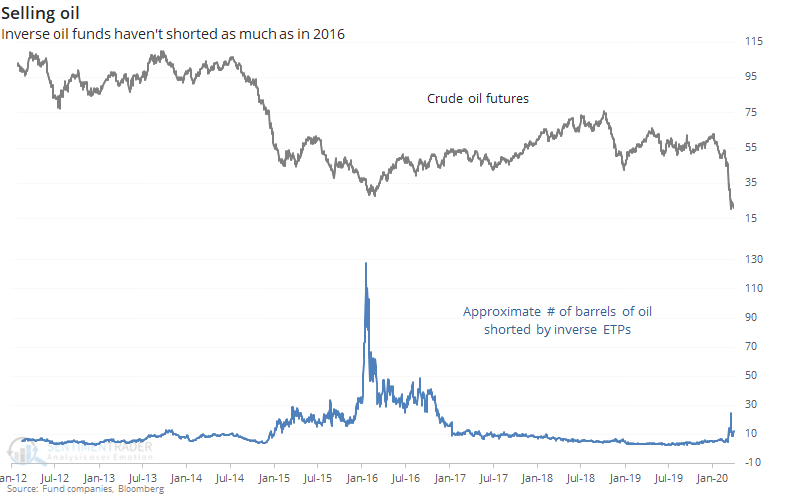
Sentiment on oil and energy stocks hit extremely negative territory in late February, and has only gotten worse, one of the rare cases of truly extreme sentiment becoming even more so. The negative sentiment been enough to push the 20-day Optimism Index for crude to one of the lowest levels since 1991.
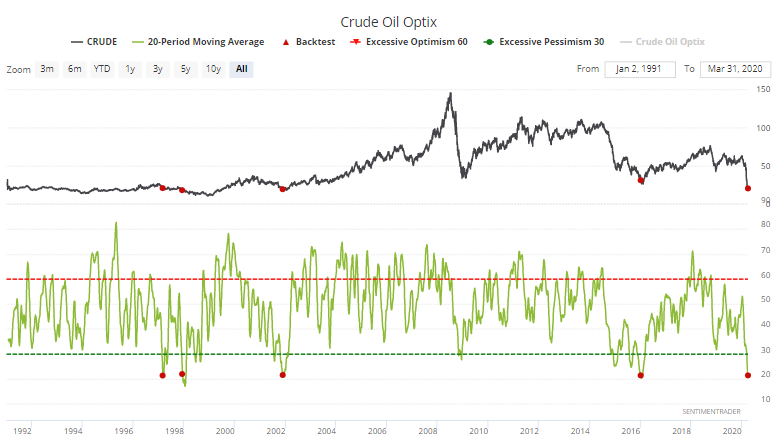
That wasn't enough to stop the slide in the late 1990s as the contract went on to (much) lower lows.
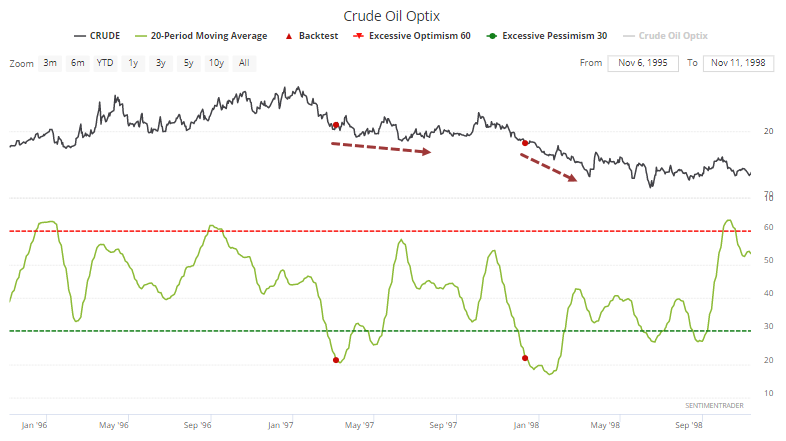
The signal in 2001 was a lot more successful.
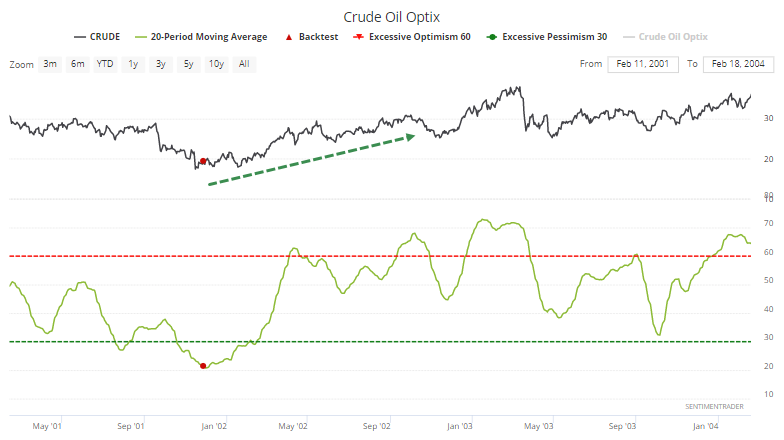
So was the bout of pessimism in 2016, though it suffered some shorter-term volatility first.

In some respects, the move this time has been even more extreme. Implied volatility in oil has by far exceeded the prior extremes.
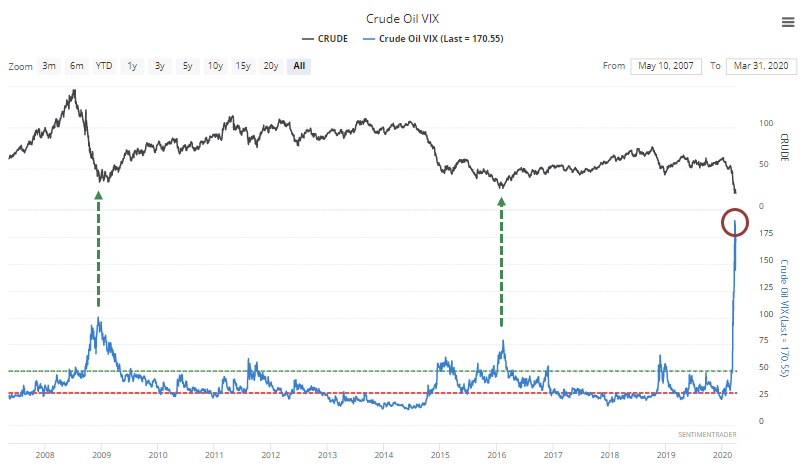
The spread between near and far-term oil futures has moved to a record, depending on the calculations used (scale is inverted).

Those are compelling, but not everything agrees. "Smart money" hedgers haven't been too eager to buy, with their position as a percentage of open interest remaining about in the middle of their recent range. Recent lows in crude coincided with more optimistic positioning from this group of traders.

Oil tends to drift higher during the summer months, for whatever a seasonal pattern is worth this year.

So far in 2020, it hasn't exactly followed its usual path.

Overall, there are some compelling reasons to believe that sentiment has reached its practical minimum. When we start to hear talk about negative prices, that's a pretty good clue in and of itself. Quite a few indicators support that view, even though like usual, not everything agrees. If the commodity (and energy stocks) hadn't already reached a lesser extreme in February and completely failed, then this setup would be more compelling.
When a market doesn't do what it should, it's usually telling us something. Commodity markets can be overwhelmed by structural factors from time to time, and it looks like that's what's happening in oil. Because of that recent failure, trying to pick this bottom seems higher risk than it normally would. But those trying to press short bets with indicator values like this seem to be running an even higher risk of sentiment quickly changing and recouping some of the damage.

